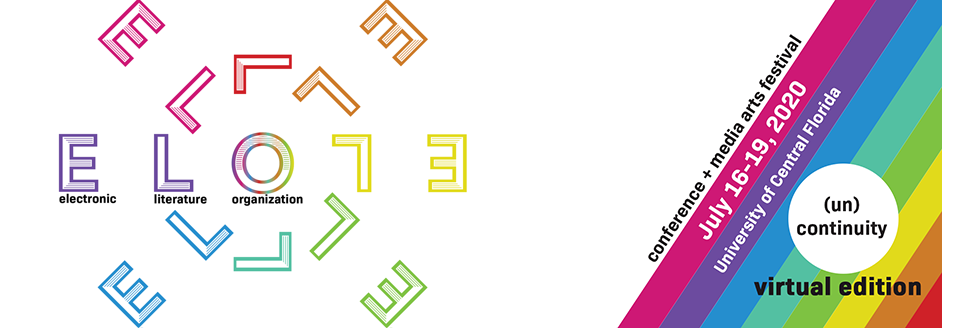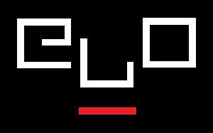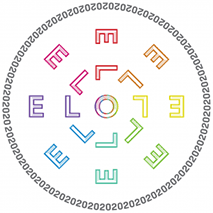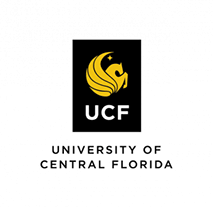Proposal Title
Narrative as a River II: (Un)continuity in Infrastructure; or, How do we Represent Cumulative E-Lit Works?
Submission Type
Conference Talk - Panel
Abstract
As narratives seem to flow on in (dis)continuity and (un)continuity, hypermedia narrative, especially, can have a pattern like the flow of the Mississippi over the centuries—a chronology of flow and erasure, the emergence of new channels and the obscuring of old ones. As a thematic base for the 4th annual Narratives Panel, these dual panels will examine the larger or even overall trajectory of specific practitioners and scholars over the years in their work on story-making and story-telling. In this second panel, practitioners and scholars of electronic literature describe systems and structures in place which represent and allow us to understand the seemingly natural “flow” of individual and cumulative works. Here, the papers seek to tell alternative stories of electronic literature, whether by describing management, or by uncovering underrepresented groups and practitioners.
In the first talk, Daniel Punday examines the metaphor of narrative as a river that evokes storytelling as a natural, uncontrollable process. And yet, we know that the history of managing river flows is one of the fundamental infrastructural challenges in human history—nowhere more than in the Mississippi and its complex relationship to the cities like New Orleans empowered but also threatened by flow and flood. In this talk, Punday will examine narrative as a seemingly natural “flow” and the infrastructure that support and tries to control it. Different storytelling platforms manage and map flow differently, and he’ll focus on a focus on the fundamental tension between mapping and flow in these digital works.
Next, Will Luers will discuss his own recent works of recombinant narrative, Tales of Automation and Distant Affinities, as attempts to create fictions of flow and flux. Computation allows for a variability of sequencing, yet in the recycling of text and images a set of concerns, tensions, conflicts are conveyed, along with character and setting. What such works omit is narrative continuity. The focus of attention of the viewer/reader is instead on the montage of effects and how these point to an implied narrative - a narrative in flux. Luers will relate Ascott's and Seaman's "Field Theory" and "Process Art" as it relates to computational fiction making.
The next two papers will describe the early development of the BIWOC in E-lit project, a comprehensive database of BIWOC (Black, Indigenous, women of colour) practitioners in e-lit. Created by Lai-Tze Fan and Neha Ravella, this project emerges as a resource for contemporary e-lit communities that respect that early e-lit offered women alternative spaces, communicative mode, and methods of dismantling tired exclusionary politics in publishing. As a response, BIWOC in E-lit offers a digital research environment for practitioners, scholars, and everyday citizens to learn more about alternative histories, approaches, and traditions of electronic literature through the works of women of colour.
In the first paper, Fan speaks to the need for such projects, arguing that the representation of women of colour in e-lit is limited in part because many coding languages are based in American English. Here, she describes similar databases that have attempted to imagine alternative histories in and through technology, such as the Lesbian and Gay Liberation in Canada project. In the second paper, Ravella discusses the database as an alternative and interactive archive of e-lit. She describes the methodology of designing and constructing the database to include entries on BIWOC practitioners that list: the practitioner’s language and country of origin, their works in electronic literature, their known collaborators, data visualizations of their major themes and topics, and suggested critical readings.
Narrative as a River II: (Un)continuity in Infrastructure; or, How do we Represent Cumulative E-Lit Works?
As narratives seem to flow on in (dis)continuity and (un)continuity, hypermedia narrative, especially, can have a pattern like the flow of the Mississippi over the centuries—a chronology of flow and erasure, the emergence of new channels and the obscuring of old ones. As a thematic base for the 4th annual Narratives Panel, these dual panels will examine the larger or even overall trajectory of specific practitioners and scholars over the years in their work on story-making and story-telling. In this second panel, practitioners and scholars of electronic literature describe systems and structures in place which represent and allow us to understand the seemingly natural “flow” of individual and cumulative works. Here, the papers seek to tell alternative stories of electronic literature, whether by describing management, or by uncovering underrepresented groups and practitioners.
In the first talk, Daniel Punday examines the metaphor of narrative as a river that evokes storytelling as a natural, uncontrollable process. And yet, we know that the history of managing river flows is one of the fundamental infrastructural challenges in human history—nowhere more than in the Mississippi and its complex relationship to the cities like New Orleans empowered but also threatened by flow and flood. In this talk, Punday will examine narrative as a seemingly natural “flow” and the infrastructure that support and tries to control it. Different storytelling platforms manage and map flow differently, and he’ll focus on a focus on the fundamental tension between mapping and flow in these digital works.
Next, Will Luers will discuss his own recent works of recombinant narrative, Tales of Automation and Distant Affinities, as attempts to create fictions of flow and flux. Computation allows for a variability of sequencing, yet in the recycling of text and images a set of concerns, tensions, conflicts are conveyed, along with character and setting. What such works omit is narrative continuity. The focus of attention of the viewer/reader is instead on the montage of effects and how these point to an implied narrative - a narrative in flux. Luers will relate Ascott's and Seaman's "Field Theory" and "Process Art" as it relates to computational fiction making.
The next two papers will describe the early development of the BIWOC in E-lit project, a comprehensive database of BIWOC (Black, Indigenous, women of colour) practitioners in e-lit. Created by Lai-Tze Fan and Neha Ravella, this project emerges as a resource for contemporary e-lit communities that respect that early e-lit offered women alternative spaces, communicative mode, and methods of dismantling tired exclusionary politics in publishing. As a response, BIWOC in E-lit offers a digital research environment for practitioners, scholars, and everyday citizens to learn more about alternative histories, approaches, and traditions of electronic literature through the works of women of colour.
In the first paper, Fan speaks to the need for such projects, arguing that the representation of women of colour in e-lit is limited in part because many coding languages are based in American English. Here, she describes similar databases that have attempted to imagine alternative histories in and through technology, such as the Lesbian and Gay Liberation in Canada project. In the second paper, Ravella discusses the database as an alternative and interactive archive of e-lit. She describes the methodology of designing and constructing the database to include entries on BIWOC practitioners that list: the practitioner’s language and country of origin, their works in electronic literature, their known collaborators, data visualizations of their major themes and topics, and suggested critical readings.




Bio
SPEAKERS:
Daniel Punday is Professor and Head of the Department of English at Mississippi State University. He is the author of five books, the most recent of which is the forthcoming Playing at Narratology: Digital Media as Narrative Theory (Ohio State). He works on the intersection between digital narrative and contemporary US print fiction. In particular, his recent work explores the way that our our terms and frameworks for discussing digital media can inform older forms, such as the traditional print novel. He is currently serving as the president of the International Society for the Study of Narrative.
Will Luers is digital media artist and writer living in Portland,Oregon. In the Creative Media & Digital Culture program at Washington State University Vancouver, he teaches multimedia authoring, creative programming, digital storytelling and digital cinema. His art has been exhibited internationally and selected for various festivals and conferences, including the Electronic Literature Organization, FILE(Brazil) and ISEA. The generative e-lit work novelling, a collaboration with Hazel Smith and Roger Dean, won the 2018 Robert Coover Award for Electronic Literature.
Lai-Tze Fan is Assistant Professor of Rhetoric and Digital Media at the University of Waterloo, working in the Department of English and the Critical Media Lab. Fan serves as Associate Editor and the Director of Communications of electronic book review, as well as Co-Editor of The Digital Review. Her research on digital storytelling, media materiality and infrastructure, and the critical digital humanities has been published in Mosaic, Convergence, Digital Studies, Media Theory, and elsewhere. Fan is co-editor of the forthcoming collection Post-Digital: Critical Debates in electronic book review (Bloomsbury Academic 2020).
Neha Ravella is a graduate student in Experimental Digital Media at the University of Waterloo and a HASTAC scholar. She is a generative artist interested in poetic computation, critical data studies, and practices of (un)learning. At the City as Platform Lab, she frames issues of data justice in smart cities using mixed reality interfaces. Previously, she directed CUTC (Canada’s largest undergraduate technology conference) and WearHacks (a wearable-tech focused hackathon).
CHAIR:
Marjorie Coverley Luesebrink writes hypermedia fiction as M.D. Coverley. Her full-length interactive, electronic novel, Califia (2000), is available from Eastgate Systems. Egypt: The Book of Going Forth by Day was published in 2006 as an artist’s book. Recent web fiction includes Riding the Rust Belt (2018), Pacific Surfliner (2017), Hours of the Night (2016) with Stephanie Strickland, and The 2015 Fukushima Pinup Calendar (2015). She is a member of the Board of Directors of the Electronic Literature Organization and was given the Marjorie C. Luesebrink Career Achievement Award in 2016. http://califia.us